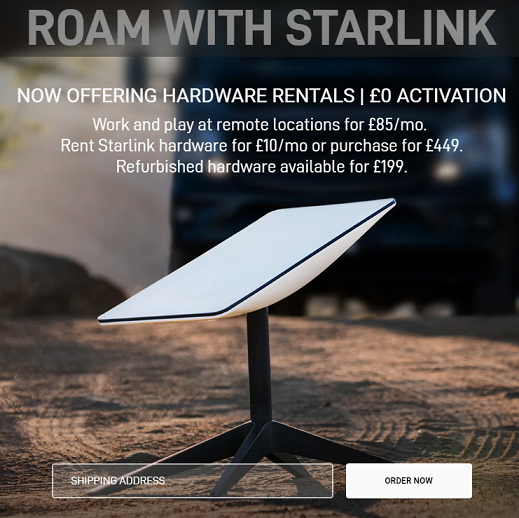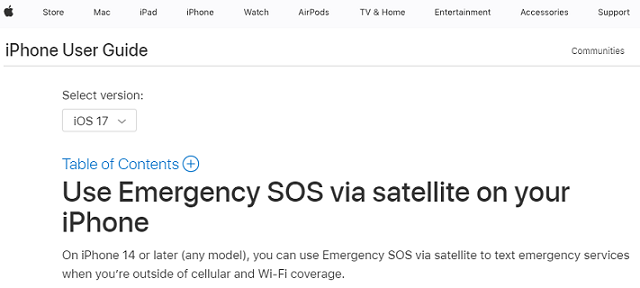It occurred to me that those of us who speak out against phone masts in Wild Land areas [Ed. see previous posts in this series] need to get out the fact that there are alternatives to mobile phones – not just coming alternatives, but here-and-now alternatives, some of which have been around for decades.
The fundamental point is that Wild Land areas are essentially empty of people – the clue is in the title. However, there remain some needs. These are: calling the emergency services; and the ability to conduct business or maybe to be entertained via the Internet. These are not essential needs – they are “nice to solve” needs. Better untamed dangerous wilderness than no wilderness.
Getting help in an emergency
Let’s take the “call 999” first. I’m a sea kayaker now – that’s what you drift into when you run out of Munros. As a routine, I carry a Personal Locator Beacon (PLB) – and I’ve been doing this for about 10 years, so it’s old technology. Here’s what they look like, and what they cost:

I’ve got a FastFind220, one of the cheapest (£200 on eBay!). They all work much the same way. Most of the time, it sits in my buoyancy aid doing nothing, with a battery which lasts 6 years. I don’t need to charge it ever, and I need a multi-year calendar, not a watch, to know when to get the battery replaced. Happily, I’ve never had to use it, but if I did, I’d flip up a cover (breaking a seal so’s to show it’s been triggered), pull out an aerial which looks like a bit of a metal tape measure, and push the big red button. The PLB then starts up its GPS, and then sends a “help!” to a satellite, saying where I am.
The satellite than calls the coastguard, who rescue me if I’m floating in the sea, or tell the mountain rescue if I’m in the Cairngorms. It doesn’t have the mobile phone convenience of being able to say I’m just a wee bit lost, but it does operate all over the world anywhere you can see enough sky. The service is free – there is no annual cost, though you do have to register with the coastguard so they know which PLB goes with which person and what they are looking for – in my case a kayak unless I am inland. There is no registration cost. It also has a homing beacon, but I suspect that that is of less importance in a land situation, where I’m not drifting downwind. It continues to call and to beacon for 24 hours.
As an anecdote, I was on a kayaking trip to East Greenland last year. We were warned: “if you have a PLB, don’t trigger it unless it’s really desperate – you’ll be rescued, yes – but rescue will cost you seriously here”.
I’m a bit out of the loop as to what hillwalkers carry these days. So I asked Glenmore Lodge what they teach on their mountain safety courses:
“PLB’s and other GPS enabled devices such as Garmin InReach are routinely used here at Glenmore Lodge by our staff on overnight expedition style courses which includes both mountain leader (summer & winter) and our sea kayak expeditions. All students attending our Mountain Training Scotland courses will be introduced to them and a discussion will take place as to their benefits.
Carrying one is not mandatory. But is certainly recommend by Glenmore Lodge for a person working in a remote location with a group where mobile phone reception may be sketchy or non-existent.”
Sea kayakers carry them as routine, and I’m confident that anyone leading a group without one would be negligent.
I guess that for estate workers in remote areas the employer’s duty of care would require them to provide some means of calling for help. I don’t know what they actually do – anyone out there with knowledge?
Two-way communications in wild land areas
There is a next step up in cost and complexity, the SPOT device, which allows simple messaging as well. There is an annual fee. I’ve no experience, so I’m not competent to say more.
Moving on to fixed or semi-fixed applications – think holiday cottages or a shooting party with a Landrover stopped for lunch and whisky – there is Starlink. Newer technology than PLBs, and dependent on Elon Musk, but still today’s technology, not tomorrow’s.

Starlink is a satellite-based Internet service, using satellites (lots of them!) in low orbit. It comes in an Amazon cardboard box, about the size of a microwave – so a bit taller than that when set up. It takes a few minutes to sort itself out and find the satellites, and it takes about 80 watts, so it’s not a knapsack job. The important point to is that the capital cost is that of a mid-range mobile phone, and the monthly cost is similar to what I pay BT for a landline and broadband service (more than BT, but not twice as much). It’s an entirely practical device for a holiday cottage, or remote place of work.
I’ve not actually used one, but I have a contact in Canada who is a geologist, frequently working with customers at mines and quarries in remote areas. Here’s his take on Starlink:
“I haven’t used my own Starlink setup yet, but I used the one my client had, first at camp, and then setup quickly and run from the truck at a mine site. Setup is quick, and the speed and reliability was excellent. Some of our friends close to our house in non-remote areas also use it as it is not much more expensive than terrestrial options, and significantly faster and more reliable than what they have access to. My experience was that it was actually better than our home connection. Cost, I don’t remember, but it can be a month to month thing, and that was not wildly expensive. For the hardware, it is up there, annual treat territory, full price is like $800, but we got it on sale for like $250.”
So there it is. There are here and now reliable communication means, costing much the same as a mobile phone or landline, which work in remote areas. We don’t need land-based infrastructure – the infrastructure is up there in space, out of sight.
One of the proof readers of this article points out that these means of communication are already becoming out of date. All iPhones, from iPhone 14 onwards, already have emergency calling via satellite (looks the same as the SPOT service described above). Here’s a snippet from the Apple user guide:

Here’s a flippant calculation: 50,000 hillwalkers in Scotland; £400 for an iPhone 14 bought in quantity. Give them all a free iPhone = £20 million. So £280 million change out of the £300 million the TNS scheme is to cost in Scotland which could be spent on something of far greater benefit.
Thank you for this Robert. One other satellite notification system on which time intervals for revealing data can be set. This small handheld or boxed unit provides periodic update of global position fully interfaced with maps. The software provides a “panic button” service , and uploads current speed and direction data too. It is a subscription service used by many ocean racing yachts but also a worthwhile asset for leaders of groups of land-based adventurers on foot or in vehicles. …yellowbrick also known as YB tracking.
It should also be noted that satellite data capability to standard mobile phones is imminent in the next year or so. Starlink have “starlink direct” in trial which at first will have text messages only, but will increase to voice calls and 4g data as more bandwidth becomes available from new satellites. A number of other companies are entering this sphere too: there’s the amazon kuiper project, AST Science, Omnispace. Rather than people requiring a separate subscription, these services will be licenced and bundled into local terrestrial mobile provider bundles by companies like vodafone.
https://www.starlink.com/business/direct-to-cell
https://omnispace.com/solutions/
https://ast-science.com/spacemobile-network/
Good to point out alternatives. Thanks. I use a Garmin InReach, which is a satellite communicator. I can send simple OK messages or longer emails and receive replies (longer messages work best in conjunction with a mobile phone). No telecommunication masts or phone signal required.
I’d missed in my article that Mountaineering Scotland have advice on PLBs in their website:
https://parkswatchscotland.co.uk/2024/02/20/unacceptable-telecommunications-masts-9-alternatives-for-wild-land-areas/
We too are sea-kayakers (graduating from Mountaineering and Rock-Climbing). We used to carry flares. But they expire, very expensive and are labeled: ‘use only when you can see your potential rescuer’ !! So we swapped to the RescueMe PLB1 many years ago. We already have had to renew the battery once, this isn’t cheap, around £120 here in the UK, so an annual cost is about £20 per annum. Good value I think. I carry it on all of our long-mountain walks too.
One complication for UK based Sea-Kayaking is the threat of the Shipping Forecast on Long-Wave (LW) disappearing sometime the the near future. About ½ the time in camp in NW Scotland we have a mobile signal, so full service for weather prediction is fine. Otherwise we rely on a tiny Sony shortwave radio that does LW. Without this we may just ‘get by’. Or may have to use something like the Garmin inReach where you can pay quite a bit to get medium to poor quality forecasts. We shall have to wait and see.
I personally don’t feel the need to be updating folks at home with a minute by minute update of where are so have no interest in all of the relatively expensive satellite options available.
The newest iPhones also have a kind of PLB function, ie can send an emergency message via satellite. Could be an interesting adjunct to the PLB in the future? Exped wise the PLB is reliable and bombproof, delicate mobiles less so.
To illustrate: A week ago I was using my iPhone to take photos on a very wet walk here in Eryri. The phone screen and my hands got so wet towards the end of the walk the screen was unresponsive and I couldn’t even take photos. So a bit flaky for use in the outdoors if it’s your only device? All of my GPS devices have physical buttons, so work in the rain with gloves I wouldn’t want to have to rely on any touch-screen phone in say a Scottish whiteout.